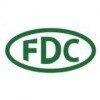Microbiologist
100+ Microbiologist Interview Questions and Answers

Asked in JHS Svendgaard Laboratories

Q. 3) what do you mean by BET(bacterial endotoxin test)? MVD and it's formula ?
BET is a test used to detect bacterial endotoxins in pharmaceutical products. MVD is the maximum valid dilution of a sample.
BET is a test performed to ensure the absence of bacterial endotoxins in pharmaceutical products.
It is based on the principle of the Limulus amebocyte lysate (LAL) assay.
The test involves diluting the sample and adding it to LAL reagent.
The MVD is the highest dilution of the sample that does not show any clotting or turbidity.
The formula for MVD is MVD =...read more

Asked in Varun Beverages

Q. How to perform a confirmatory test in pharmaceutical analysis?
Confermetri test is not applicable for P. aeruginosa.
Confermetri test is used to determine the susceptibility of bacteria to antibiotics.
However, P. aeruginosa is intrinsically resistant to many antibiotics.
Therefore, Confermetri test is not useful for P. aeruginosa.
Other methods such as disk diffusion or MIC testing should be used instead.
Microbiologist Interview Questions and Answers for Freshers

Asked in Ciron Drugs & Pharmaceuticals

Q. What is Gram staining?
Gram staining is a technique used to differentiate bacteria into two major groups: Gram-positive and Gram-negative.
Gram staining involves a series of steps including fixation, staining with crystal violet, iodine treatment, decolorization with alcohol, and counterstaining with safranin.
Gram-positive bacteria retain the crystal violet stain and appear purple under a microscope, while Gram-negative bacteria lose the stain and appear pink or red.
The staining helps in identifying...read more

Asked in Kwality Pharmaceuticals

Q. What is Microbiology, what is gram negative or gram positive bacteria ,what are the type of fungi
Microbiology is the study of microorganisms such as bacteria, viruses, fungi, and parasites.
Gram-negative bacteria have a thin peptidoglycan layer and an outer membrane, while gram-positive bacteria have a thick peptidoglycan layer.
Examples of gram-negative bacteria include Escherichia coli and Salmonella, while examples of gram-positive bacteria include Staphylococcus and Streptococcus.
Fungi are eukaryotic microorganisms that can be either unicellular (yeasts) or multicellul...read more

Asked in Centaur Pharmaceuticals

Q. What is sterilization, and what are the different types of sterilization?
Sterilization is the process of killing or removing all forms of microbial life from an object or environment.
Sterilization ensures the complete elimination of all microorganisms, including bacteria, viruses, fungi, and spores.
Common methods of sterilization include heat, radiation, filtration, and chemical agents.
Heat sterilization methods include autoclaving, dry heat, and flaming.
Radiation sterilization can be achieved through gamma radiation or electron beam irradiation.
F...read more

Asked in Teerthanker Mahaveer University

Q. What was the sample size of your study?
The sample size of my study was 100 participants.
The sample size was determined based on statistical power calculations.
A larger sample size increases the reliability and generalizability of the study findings.
The sample size was evenly distributed across different age groups and genders.
The study aimed to minimize sampling bias and ensure representative results.
The sample size was sufficient to detect significant differences between groups.
Microbiologist Jobs




Asked in East African (I) Overseas Dehradun

Q. How to change police and Time management in East African India overseas.
Improving police and time management in East African India overseas.
Implement community policing initiatives to build trust and collaboration between the police and the local population.
Enhance training programs for police officers to improve their skills and knowledge in crime prevention and investigation techniques.
Invest in modern technology and equipment to aid in effective policing and crime detection.
Establish efficient communication systems between different police dep...read more

Asked in RealPage

Q. What are the differences between the PCR method and blotting techniques?
PCR is used to amplify DNA while blotting techniques are used to detect specific DNA or protein sequences.
PCR amplifies DNA while blotting detects specific sequences
PCR requires a DNA template while blotting requires a probe
PCR is faster and more sensitive than blotting
PCR can be used for genotyping while blotting can be used for protein detection
Share interview questions and help millions of jobseekers 🌟


Asked in Varun Beverages

Q. What is the Brix value check in syrup?
Brix check in syrup is a measurement of the sugar content in a syrup solution.
Brix is a unit of measurement used to determine the sugar concentration in a liquid.
It is commonly used in the food and beverage industry to assess the quality and sweetness of syrups.
The Brix value is obtained by measuring the refractive index of the syrup using a refractometer.
A higher Brix value indicates a higher sugar content in the syrup.
For example, a maple syrup with a Brix value of 66 means...read more

Asked in Equinox Labs

Q. What is culture media?
Culture media is a substance used to grow and cultivate microorganisms in a laboratory setting.
Culture media provides the necessary nutrients and conditions for microorganisms to grow and reproduce.
It can be in the form of liquid or solid media, depending on the type of microorganism being cultured.
Different types of culture media are used for specific purposes, such as selective media to isolate specific microorganisms or differential media to distinguish between different t...read more

Asked in Teerthanker Mahaveer University

Q. Why did you choose a sample size of 246?
The sample size of 246 was determined based on statistical calculations and practical considerations.
The sample size was determined using statistical power analysis to ensure sufficient statistical power.
A larger sample size may not have been feasible due to time, cost, or resource constraints.
The sample size may have been determined based on previous studies or literature in the field.
The sample size should be large enough to provide reliable and meaningful results.
The decis...read more
Asked in Government General Hospital

Q. Why is ZN stain used, and which bacteria can be diagnosed using it?
ZN stain is used to diagnose bacteria that cause tuberculosis and leprosy.
ZN stain stands for Ziehl-Neelsen stain.
It is a special staining technique used to detect acid-fast bacteria.
The bacteria that can be diagnosed using ZN stain include Mycobacterium tuberculosis (causes tuberculosis) and Mycobacterium leprae (causes leprosy).
The stain helps in visualizing the bacteria under a microscope by staining them red against a blue background.

Asked in Lee Pharma

Q. How do you handle challenges in laboratory operations while ensuring compliance with safety standards?
I address laboratory challenges by prioritizing safety, implementing protocols, and fostering a culture of compliance and communication.
Risk Assessment: I conduct regular risk assessments to identify potential hazards in laboratory operations, ensuring that all safety measures are in place.
Standard Operating Procedures (SOPs): I develop and enforce SOPs for all laboratory processes, ensuring that all staff are trained and compliant with safety standards.
Incident Reporting: I ...read more

Asked in Varun Beverages

Q. What is the appropriate size for a microbial test plate?
The question is unclear and lacks context. Please provide more information.
Please clarify what is meant by 'micro test palt size'
Provide context for the question
Without more information, it is impossible to give a meaningful answer

Asked in Biotechnology

Q. Introduction Family background Occupation
I am a microbiologist with a strong family background in science and medicine.
My parents are both doctors and my siblings are also in the medical field.
I have a Bachelor's degree in Microbiology and a Master's degree in Medical Microbiology.
Currently, I work as a research microbiologist at a pharmaceutical company.
I have experience in conducting experiments, analyzing data, and presenting findings.
I am passionate about studying microorganisms and their impact on human health.

Asked in Membrane Filters

Q. what are the water purification methods & techniques ?
Water purification methods include filtration, disinfection, and distillation.
Filtration involves passing water through a physical barrier to remove impurities.
Disinfection uses chemicals or UV light to kill bacteria and viruses.
Distillation involves boiling water and collecting the condensed steam to remove impurities.
Other methods include reverse osmosis, ion exchange, and activated carbon filtration.
Water treatment plants often use a combination of these methods to ensure ...read more
Asked in Beta Drugs

Q. Sterility is achieved through 0.2 micron filters in manufacturing. Why not 0.45 micron?
0.45 micron filters are effective for sterilizing liquids by removing bacteria, while 0.2 micron filters target smaller pathogens.
0.45 micron filters are commonly used to remove bacteria from solutions, making them suitable for sterilization in many applications.
0.2 micron filters are designed to remove smaller microorganisms, including some viruses, providing a higher level of sterility.
In pharmaceutical manufacturing, 0.45 micron filters are often used for sterilizing heat-...read more

Asked in Parag Dairy

Q. What are the steps involved in creating a Standard Operating Procedure (SOP)?
Creating an SOP involves defining, documenting, and implementing standardized procedures for consistency and quality control.
Identify the purpose: Determine the need for the SOP, such as ensuring compliance with regulations or improving efficiency.
Gather information: Collect relevant data, guidelines, and best practices related to the procedure.
Draft the SOP: Write a clear and concise document outlining the steps, responsibilities, and necessary materials.
Review and revise: H...read more

Asked in Pfizer Healthcare india pvt lit

Q. How do you isolate a soil organism using isolation techniques in microbiology?
Isolating a soil organism involves using techniques like serial dilution, spread plate method, and selective media.
Prepare serial dilutions of the soil sample to obtain isolated colonies
Spread the diluted sample onto agar plates using a spread plate method
Use selective media to encourage the growth of specific soil organisms
Incubate the plates at the appropriate temperature and conditions for the organism of interest
Pick isolated colonies for further analysis and identificati...read more

Asked in Lee Pharma

Q. What strategies do you use to ensure accuracy and quality in laboratory documentation?
Ensuring accuracy and quality in lab documentation is vital for reliable microbiological research and compliance with standards.
Standard Operating Procedures (SOPs): Implementing SOPs for all laboratory processes ensures consistency and accuracy in documentation.
Regular Training: Conducting regular training sessions for staff on documentation practices helps maintain high standards and reduces errors.
Double-Checking Data: Encouraging a culture of double-checking data entries ...read more

Asked in Varun Beverages

Q. How do you test sugar for microbial contamination?
Micro of sugar can be done by using a microscope to observe the microorganisms present in the sugar sample.
Prepare a sample of the sugar by dissolving it in water and placing a drop on a microscope slide.
Observe the sample under a microscope at high magnification to identify any microorganisms present.
Use staining techniques to enhance the visibility of the microorganisms if necessary.
Record and analyze the data obtained from the micro of sugar to determine the quality and sa...read more
Asked in Revacure Lifesciences

Q. Growth promotion test culture dilution technique
The growth promotion test culture dilution technique is used to determine the potency of a culture medium.
The technique involves preparing a series of dilutions of a microorganism in a culture medium
Each dilution is then inoculated onto the culture medium and observed for growth
The potency of the culture medium is determined by the dilution at which growth is observed
This technique is important in ensuring the quality of culture media used in microbiological testing
Asked in Cauvery Aqua

Q. What are the detailed specifications and features of a laminar airflow chamber?
A laminar airflow chamber is a controlled environment used to maintain a sterile work area for microbiological experiments.
Provides a continuous flow of filtered air to prevent contamination
Features HEPA filters to remove particles and microorganisms
Maintains positive pressure to keep out contaminants
Equipped with UV lights for additional sterilization
Available in various sizes and configurations for different applications

Asked in TCS

Q. Tell me about yourself.

Asked in Kwality Pharmaceuticals

Q. What is LAF and what are its uses?
LAF stands for Laminar Air Flow. It is used to create a sterile environment in laboratories and medical facilities.
LAF is a type of ventilation system that directs filtered air in a uniform direction.
It is commonly used in microbiology labs to prevent contamination of samples and cultures.
LAF hoods are also used in hospitals during surgeries to maintain a sterile environment.
The airflow in LAF systems is designed to prevent the escape of airborne contaminants.
LAF systems can ...read more

Asked in Varun Beverages

Q. How do you identify microorganisms?
Micro organics can be identified through various methods such as microscopy, culture, biochemical tests, and molecular techniques.
Microscopy involves observing the microorganisms under a microscope to identify their morphology and structure.
Culture involves growing the microorganisms on specific media to identify their growth characteristics and biochemical properties.
Biochemical tests involve identifying the metabolic activities of the microorganisms through various tests su...read more

Asked in Teerthanker Mahaveer University

Q. What are the viral markers of HIV?
Viral markers of HIV include p24 antigen, HIV antibodies, and viral RNA.
p24 antigen is a viral protein that can be detected in the blood during the early stages of HIV infection.
HIV antibodies are produced by the immune system in response to HIV infection and can be detected through antibody tests.
Viral RNA, specifically HIV RNA, can be measured using nucleic acid amplification tests (NAATs) to diagnose HIV infection.

Asked in Varun Beverages

Q. How do you prepare a sugar sample?
Sugar sample can be prepared by dissolving sugar in water and filtering the solution.
Weigh the required amount of sugar
Add it to a beaker of distilled water
Stir the solution until the sugar dissolves completely
Filter the solution through a filter paper to remove any impurities

Asked in Varun Beverages

Q. Why is pH testing important for water?
pH test in water is important to determine its acidity or alkalinity level.
pH levels can affect the growth of microorganisms in water
Drinking water should have a pH level between 6.5 and 8.5
High or low pH levels can indicate contamination or chemical imbalances
pH testing is also important in swimming pools and aquariums

Asked in Concord Biotech

Q. What pathogens are tested in QC microbiology?
Pathogens commonly tested in QC microbiology include bacteria, viruses, fungi, and parasites.
Bacteria: Escherichia coli, Staphylococcus aureus, Salmonella spp.
Viruses: Influenza virus, Herpes simplex virus, Norovirus
Fungi: Candida albicans, Aspergillus fumigatus, Cryptococcus neoformans
Parasites: Giardia lamblia, Plasmodium falciparum, Trichomonas vaginalis
Interview Questions of Similar Designations
Interview Experiences of Popular Companies








Reviews
Interviews
Salaries
Users



















